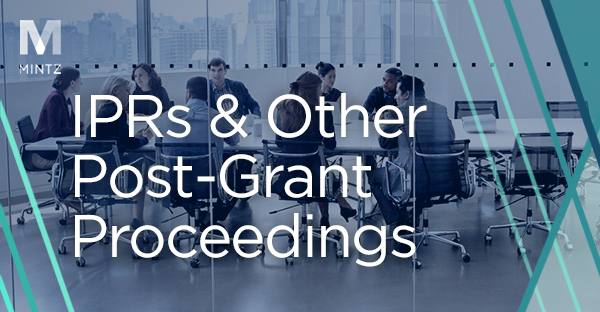Patent Owner Tip #10 for Surviving an Instituted IPR: Address Claim Construction and Public Availability
When confronted with instituted IPRs, Patent Owners should identify and exploit issues that the Petition glossed over and bring those to the attention of the Board. This will highlight for the Board important issues that the Petition failed to sufficiently address and can lead to victory for the Patent Owner. This week’s installment of our series of “Surviving an Instituted IPR” for Patent Owners will specifically address two such issues: claim construction and public availability of the prior art.
Claim Construction
Regarding claim construction, we previously addressed the issue of tackling claim constructions that the Petitioner ignored in our preinstitution series. Proper claim constructions of key claim terms are one way a Patent Owner can demonstrate patentability of the challenged claims. Now that the IPR has instituted the Patent Owner can and should get more aggressive with claim construction by proposing claim constructions that the relevant prior art cannot satisfy. In the circumstances where the Petition is silent as to specific constructions, and relies on the plain and ordinary construction, the Patent Owner can advocate for constructions that avoid the prior art in its Patent Owner response.
Petitions are required to address any claims that require construction. 37 CFR § 42.104(b)(2) (“The statement must identify…[h]ow the challenged claim is to be construed.”) Petitioners often punt at this stage of the IPR proceeding arguing that the Board should afford the claim terms their plain and ordinary meaning. This “punt” opens the door for Patent Owners to expand on what the plain and ordinary meaning is, or offer their own construction, that Petitioners will be hard-pressed to rebut.
In these situations, Patent Owners should seize the opportunity to offer constructions for a few reasons. First, identifying one or more key claim construction issues is a good idea because it creates legal issues that the Federal Circuit will review de novo on appeal, should the Board continue to side with Petitioner. Second, by offering a construction of key claim terms, Patent Owners can advocate for a construction that avoids the prior art to uphold the patentability of the challenged claims. Finally, Patent Owner can force the Petitioner away from its safe haven of plain and ordinary, and in turn, make the Petitioner take a position on the construction. Oftentimes, this will lead to the Petitioners attempting to shift their positions from their petition and offer new theories or evidence that should have been included in the initial petition and not the reply to the Patent Owner response.
Public Availability
Another issue that may arise when the asserted prior art is non-patent printed publication is the public availability of that art. Petitioners have an affirmative duty to establish that the selected art is prior art, including that a POSA could find the reference. Challenging the public accessibility of printed publications used in an instituted IPR is another important tool for overcoming the prior art. In order to demonstrate that a printed publication was publicly accessible, Petitioners must prove that (1) the printed publication was available to those interested and skilled in the art and not simply those already members or participants in the organization maintaining the repository, see Samsung Electronics Co. Ltd. v. Rembrandt Wireless Technologies, LP, IPR2014-00514, Paper 18, at 4 (P.T.A.B. Sept, 9, 2014)) (“Rembrandt Final Written Decision); and (2) one interested and skilled in the art could reasonably have found the reference. SRI International, Inc. v. Internet Security Systems, Inc., 511 F.3d 1186, 1195 (2008). Petitioners may take the public availability of a reference for granted. In such circumstances, Patent Owners can focus on Petitioner’s failure on either of these elements to demonstrate that the printed publication was not publicly accessible, and therefore cannot be considered prior art.
To learn more from the Mintz IP team, follow us on LinkedIn and check out our Exclusive Rights podcast.
Authors



